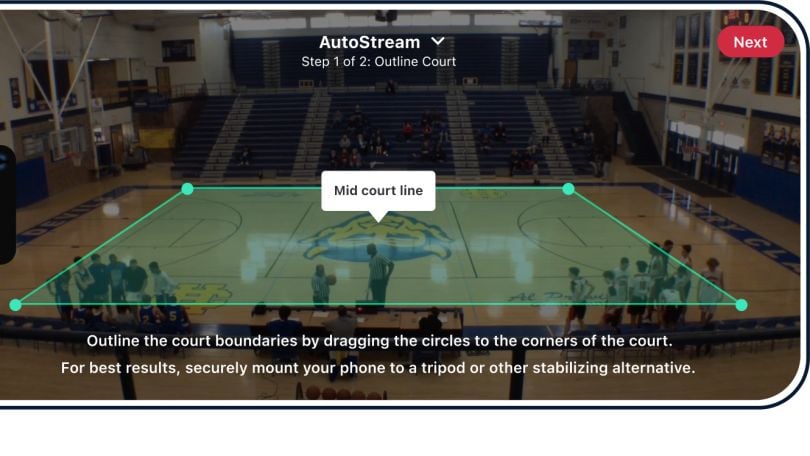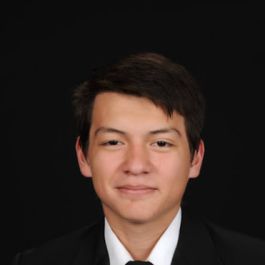When Kobe Bryant’s teammates would show up for an early morning practice, it was not uncommon to see the basketball great already drenched in sweat and running drills in a dark gym.
The Lakers legend was known for showing up early, leaving late and putting endless hours into his skills training — even when he was already the best player on a team. What Bryant, and just about every other Hall of Famer, knows is that relentless training and attention to detail can make the difference between a win and a loss.
The same can be said for building an AI model: data labeling is the engineer’s layup drill.
“Labeling data will always be the slow part of developing a machine learning feature,” said Senior Product Manager MacKenzie Warren. “It isn’t exciting and it feels like you’re wasting time waiting for data, but it ultimately pays off in the end.”
Warren is responsible for the strategy and roadmap of the computer vision team at GameChanger, an athletic tech company that focuses on youth sports. When explaining how GameChanger’s new tool, Film Room, was created, he noted that focusing on the details within the data was an important lesson he learned about machine learning models.
“With a lot of high-quality labeled data, we were ultimately able to build a model that was more accurate and worked in more cases than we had initially thought,” he said.
How GameChanger Made Film Room
The technical teams at GameChanger, like Warren’s, are bringing new product features to life that can make a big difference for coaches and players. For example, Film Room lets coaches analyze and break down game film. Warren explained that the product allows coaches to create clips, annotate them with notes and share those clips with other team members.
The AI within Film Room automatically breaks down the game and removes downtime — like halftime and time-outs — to make reviewing the film faster for coaches.
“Coaches are spending hours of unpaid time every week to rewatch and analyze video from their team’s latest game,” said Warren. “This is a critical activity for them to plan practices based on opportunities for growth and motivate their athletes by noting improvements and successes.”

On a technical level, Film Room’s image capabilities are impressive.
“When we started this project, we expected to only be able to build AI for video taken from static cameras; that is, cameras that weren’t panning or zooming at all,” said Warren. “We were surprised and excited to find that the AI we developed was nearly as accurate on nonstatic footage as static footage.”
The high level of accuracy that the model produced allowed the team to release it for all video streams on iOS devices — allowing more users to have access to it.
GameChanger Senior Vice President of Engineering Ami Kumar added that computer vision is what takes Film Room to the next level.
“Film Room will help basketball coaches coach their teams more effectively,” said Kumar. “This feature will be backed by computer vision to ease the burden of film review for coaches by automatically detecting downtime or other interesting, coachable moments in the game.”
Kumar added that the team’s use of computer vision will save coaches valuable time in wading through footage “so that they can focus on coaching and supporting their athletes.”
Warren agreed. “With Film Room, coaches will be able to complete their game analysis entirely within the GameChanger app, faster than they’ve been able to before,” he said. “Particularly with the AI breaking down the game and removing downtime, we’re letting coaches focus their attention on the action that matters and more quickly navigate to the moments that they care about.”
“With the AI breaking down the game and removing downtime, we’re letting coaches focus their attention on the action that matters and more quickly navigate to the moments that they care about.”
“We are using computer vision to alleviate the burdens of people using our product, automating away anything getting in the way of coaches coaching and parents enjoying young athletes’ games,” added Kumar.
Kumar leads the 110 person engineering team, which includes product engineering, platform and infrastructure engineering and the quality department.
“I drive strategy and execution for engineering, develop and grow the team with a focus on the leaders in the department, foster technical excellence as we scale, collaborate closely with other departmental leaders and create an environment of innovation,” said Kumar.
She went on to explain how impressive it is that the team was able to set the technical bar so high for themselves, especially with video that is taken using a phone and isn’t the best quality.
“I have been incredibly impressed with our computer vision team’s ability to achieve impressively high accuracy for our models,” she noted. “They have also been able to produce models quickly, which gives them the ability to compare and experiment easily.”
Warren shared a bit about the team’s process to make sure everything was on track.
“One strategy we took on the Computer Vision team was to demo early and often how our AI models were performing so that we could be sure that what our model was doing matched the expectations of all of our stakeholders,” he added.
How GameChanger Created Autostream
Software Engineer Kevin Aguilar is excited about another debut from the GameChanger computer vision team: Autostream.
“Autostream was our first venture into computer vision as an organization, making it especially exciting to demonstrate how it can be used in sports,” said Aguilar. “Autostream allows users to set up their phone to stream a basketball game, with our model detecting the players’ positions and automatically panning to follow the action. This enables users to focus on watching the game at the arena without worrying about manually adjusting the camera.”
He explained that Autostream is intended to enhance the user experience when live streaming a game.
“We aim to establish ourselves as an innovative leader, eager to embrace cutting-edge technologies and push boundaries to create the best possible products,” said Aguilar, noting that the team hoped to create a ‘set it and forget it’ concept. “For our users, we hope that integrating computer vision will streamline their experience, allowing them to continue enjoying stats and videos with less effort.”

Aguilar began developing Autostream as a side project during his internship at GameChanger. Today, he refers to his role as a “swiss army knife” ready to assist wherever the team needs help — and building Autostream required the whole team’s help.
Autostream required overcoming challenges, like running a computer vision model with post-processing on a device. But Autostream also introduced the team to a new level of play.
“[It] sparked significant interest in the potential of computer vision within our app, leading to the formation of a new computer vision team that helped take Autostream from its initial demo stage to its current state,” explained Aguilar.
Sweating Through the Challenges, Counting up the Wins
Aguilar noted that he grew professionally while building Autostream.
“Every time I reached a new milestone in the demo version of the app, I found it very encouraging,” he continued. “As someone new to the computer vision space, it was rewarding to learn this new technology while making continuous progress on the feature. I learned what it takes to transform an idea into a fully developed product that reaches all our users.”
“I learned what it takes to transform an idea into a fully developed product that reaches all our users.”
Kumar, who oversaw the build and strategy of both Autostream and Film Room on a high level, was impressed with the team’s ability to bring a new level of accuracy to AI that can make a difference in customer’s lives.
She noted that the team has also produced models quickly, which gives them the ability to “compare and experiment easily.”
Being able to pivot, adjust and perfect the details — like data labeling — brought a new level of technical athleticism to the team.
“My biggest takeaway, however, is to never consider anything impossible,” concluded Aguilar. “There were many moments during development when I thought there was no way something would work, yet each time, I was able to find a solution that met or exceeded my expectations.”








